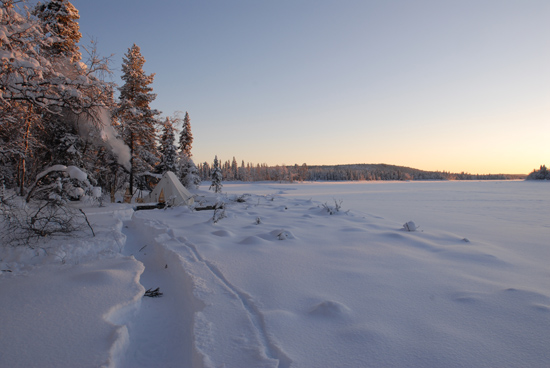I am planning a week of treking in the new year, hopefully the Slieve Bloom Way, in Ireland where live.
Id welcome any tips on treking in winter.
I am happy enough treking in the summer, I did Offas Dyke back in 1976. I am also happy enough with day hikes in winter ice and snow after having spent the 90s living in Scotland with the mountains on my doorstep.
What I have never done before is treking in winter, so in preparation for this adventure I have been testing out some of the gear on day trips and in the Garden.
The current cold snap provided an ideal opportunity to test the sleep system. It's a UK army modular setup and I spent the night under canvas this week at -6c , and was snug as a bug, so great success there.
What I did not bargain for was that the tent was stiff as a board with frost and ice. I am really unsure how to proceed with breaking camp in such a scenario. Since its in the garden I've left it up, but as it's shaded it's actually not really thawed yet.
Obviously this would be a problem treking when you are targeting to cover a good distance each day, you don't want to be held up waiting for a tent to thaw.
Any tips on how to break camp and still have a serviceable dry tent to re erect at the end of the day ?
Id welcome any tips on treking in winter.
I am happy enough treking in the summer, I did Offas Dyke back in 1976. I am also happy enough with day hikes in winter ice and snow after having spent the 90s living in Scotland with the mountains on my doorstep.
What I have never done before is treking in winter, so in preparation for this adventure I have been testing out some of the gear on day trips and in the Garden.
The current cold snap provided an ideal opportunity to test the sleep system. It's a UK army modular setup and I spent the night under canvas this week at -6c , and was snug as a bug, so great success there.
What I did not bargain for was that the tent was stiff as a board with frost and ice. I am really unsure how to proceed with breaking camp in such a scenario. Since its in the garden I've left it up, but as it's shaded it's actually not really thawed yet.
Obviously this would be a problem treking when you are targeting to cover a good distance each day, you don't want to be held up waiting for a tent to thaw.
Any tips on how to break camp and still have a serviceable dry tent to re erect at the end of the day ?


